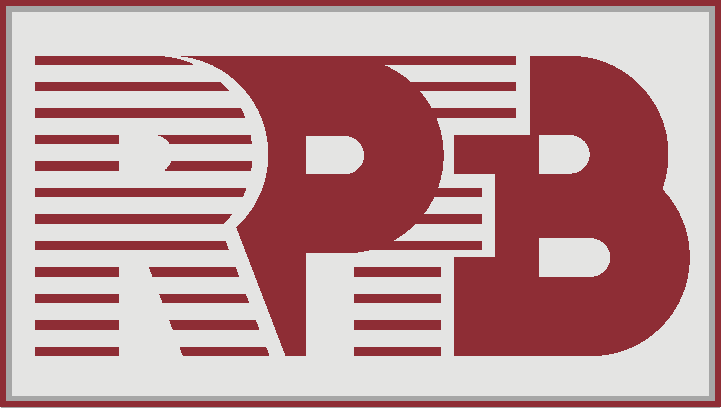Project financing: fashion or necessity?
Guide for Financial Directors: «When do you need to think about project financing?
In recent years, it is rather common to hear that a company is attracting project finance for its investment project. What does project finance mean in practice and what should be done by financial directors to take advantage of project finance?
The majority of corporate executives responsible for the financing of development programs and/or investment projects face the issue – which sources of funds to approach? What instruments to use? We are not talking about short-term liquidity requirements, cash gap coverage or routine trade finance. We are talking about capital investment needs with relatively long payback periods. In this situation, there are a number of options: attraction of equity capital to the company (private equity placement, IPO, SPO), debt financing corporate financing, asset based financing (and other types of structural financing), various mezzanine instruments and, finally, project financing («PF»).
The question arises for the financial manager, which tool to choose, is PF suitable for his particular situation? Each investment project is unique, as well as surrounding circumstances in which it is implemented, i.e. there are no universal financial recipes. Nevertheless, we have tried to summarize the existing international as well as Russian experience and make a number of simple recommendations: when and why it is appropriate to use the PF, what pros and cons of this instrument, what are the main steps to raise PF.
We often face a situation where by the idiom PF everyone understands something of his/her own. Frequently, PF is confused with the financing of the projects in general. So, let’s start by clarifying the terminology and the definition.
Project financing is the debt financing technology of an investment project based on its own assets and economic viability, when debt is served by cash flows generated by the project. In this case, project risks are assumed by various project participants, including lenders, and/or mitigated by contractual obligations of the parties and conditional (selective) guarantees of the sponsors, i.e. recourse on sponsors is limited.
The sponsor (investor, partner) is one of the project initiators, investing risk capital (equity), covering a number of project risks and receiving an up-side / economic return from the project.
Now let’s specify what financial needs we are talking about. First of all let’s talk about investment projects from scratch (greenfield), assuming use of proven technologies (innovation projects is the object for venture financing). We do not consider cases of modernization / expansion for simplicity.
Example:
Oil & Gas Company (Sponsor) – established corporation with stable cash flows and rating decided to build a new Liquefied Natural Gas («LNG») plant . The following project elements are defined: the site for the plant, the source of feed gas (field) and the supply route (gas pipeline), the market research and the transportation routes of LNG. Based on these required capacity has been determined, technological process selected, feasibility study prepared, potential suppliers and contractors identified. EPC shipping, offtake and other contracts are being prepared. If corporate approach is used, the simplified way of actions is the following: assessment of the company’s own funds that can be allocated, and for the balance of capex corporate loans are raised on the balance sheet (either corporate bonds, or bank loans).
However, the construction of LNG plant is a typical case where the use of PF can be considered. This financial technology simplistically assumes the following actions: the establishment of a special project company (possibly involving partners) which will act as the project operator and borrower, contributions of equity, development of feasibility study then FEED (proving, inter alia, economic viability), conclusion of the contracts with vendors, development of business model (tolling or commercial), conducting market research, entering into the contracts with LNG buyers, development of the security structure, approaching the market – syndication is carried out, conducting due diligence, negotiation of credit documentation, etc.
So which way to choose? What are pros and cons of either approaches? If you choose PF, how to proceed?
Let us try to formulate the reasons / features, when and why you need PF:
- It is possible (and necessary) to ring fence the project assets, separate its cash flows from those of the Sponsor
- The project is to be implemented jointly with partners (who will invest risk capital). In this case, a joint venture shall be established as a project company
- The project is complex and capital extensive. There is a need to share the risks (in those aspects where there is no necessary experience/expertise). The scale of the project justifies the preparation costs
- High level of debt and other difficulties in attracting capital at the corporate level, i.e. the need to reduce the burden on the balance sheet
- The cost of project finance may be lower than the cost of corporate debt. This is achievable if the project involves partners, buyers, contractors with a higher rating than the one of main sponsor, or there is an opportunity to mitigate the country risk with a pledge of foreign currency revenue of the project
- Liquidity in the market for PF is greater than for corporate debt. For example, when the market for corporate borrowing is limited (low Sponsor rating, crisis in the financial market), and the project uses bulk of equipment supplies and services from developed countries – this opens the possibility of attraction of tied export loans from Export Credit Agencies («ECAs»)
- A project with a long payback period. The term of PF loans can be longer than the term of the corporate loans. There are specific sources such as ECAs that have special programs for PF with longer loan tenors than regular (trade) export loans have
- It is required to improve the economics through the effect of financial leverage (increase the return on equity (RoE), release of own funds for other investment opportunities and getting income from them). In principle, this effect can work when attracting any form of loans, including on the corporate level, because the cost of debt is usually lower than the cost of equity and the weighted average cost of capital (WACC). For some projects with weak economic indicators, the possibility of financial leverage from the PF can be critical for making a positive investment decision
- A need for a «quality mark» for the project. Investment decision on the project may depend on the possibility of attracting PF. The arrival of PF lenders in the project is a confirmation of project quality and that the project is properly structured
- The regulation allows to allocate and pledge project assets, regulated tariffs secure feasibility, etc. This is true for most industries in market economies, including the Russian Federation. Although in some sectors (for example, oil and gas pipelines belong to state monopolies in Russia) legislation does not allow to transfer certain assets to third parties, transportation tariffs do not contain an investment component (cross-subsidization is applied), which makes it difficult to ensure economic viability. In such cases, PF is extremely difficult. Although, there are often special carve outs in regulation, newly created assets are not subject to restrictions, or there may be temporary ownership by third parties with the subsequent transfer to monopolies. It is possible to find ways to circumvent tariff restrictions, for example, to compensate for the absence of an investment component in the transport tariff by introducing artificial payments, if overall economic can bear such expenses
- Project is «not spoiled» at the initial stage of preparation. If at the initial stage structuring and acceptability for creditors have not been among the goals, then sometimes it is «more expensive» to change the decisions made to bring the project to a bankable shape
PF, in addition to funding, brings a number of benefits to the sponsors, which have already been mentioned – limited recourse (reduction of balance-sheet pressure), risk sharing, economic effect of financial leverage. However, there is a price to be paid for these benefits. It worth to mention the following disadvantages:
- relatively high cost and often long preparation, mainly due to the need for due diligence with involvement of independent consultants
- some limitation of flexibility: the presence of an additional party – lenders that may influence the business behavior of the borrower, some decision are subject to the lenders consent (for example, project expansion and raising additional debt)
- the risk that an asset may be alienated by creditors, as beneficiaries of collateral security, in the event of the borrower’s default (although this occurs very rarely, only if sponsors are disappointed by the project and do not use all means to save the asset)
- sponsors as investors and participants in the contract chain will have to cover some risks and provide guarantees (mostly conditional and non-financial) to enhance the contracts to «bank quality» or cover the liabilities of non-performing members of the structure
- obligation to create and maintain security, provide financials, perform reporting procedures, maintain contractual structure, etc.
It may be useful to explicitly list the features of the situations when project financing is not needed (i.e. the project can be financed through a balance sheet or under corporate guarantees):
- simple project, sponsor(s) have sufficient experience, project risks are visible and acceptable
- low levels of corporate debt
- the market for corporate borrowing is favorable (in terms of liquidity, cost, etc.)
- the speed of financing is more important than other factors, including the need to improve the economics
For the sake of completeness, it would be good to assess the likelihood of attracting PF when deciding on PF as a suitable project funding instrument. We will try to formulate the main requirements of international creditors to the project:
- the availability of funds and the willingness of sponsors to contribute risk capital in the amount of at least 30% of the cost of the project, risk capital, as a rule, should be deposited ahead of schedule, prior to the receipt of funds from the PF
- the availability of credit rating (financial condition) of the project participants at a level acceptable to the lenders. These are mainly risk owners: sponsors who provide conditional guarantees (e.g., completion guarantees) and buyers of products that are a source of revenue for the project
- transparency – willingness to disclose commercial information
- construction contract of appropriate quality (preferably EPC, i.e., «turnkey» with high responsibility of the contractor for meeting deadlines and estimates), adequate project management system
- compliance with environmental standards – if the project does not comply with the so-called «equator principles» many lenders cannot even consider the project
- the possibility of finding structural solutions to compensate for the shortcomings of local regulation and investment environment
The last question is the most complicated. The answer is not obvious, especially at an early stage of the project. In this case, as in all others, experts with relevant experience in the PF and preferably in the local conditions, which are engaged as financial advisors, can help. According to industry practice, the main part of the remuneration of the financial consultant is received as a reward «for success», i.e. when the project received real money. A professional and responsible consultant will not engage in the process for the sake of the process. Advisor and the client will try to assess the prospects of the project at an early stage and will not take up the project if the chances of positive results are very small. In return, professionals can suggest alternative ways to raise funds.
Let’s say the company sees the prerequisites for attracting PF. Such prerequisites include the understanding of the commercial rationality of the project (demand for products, availability of raw materials, transport scheme, etc.) and the existence of a feasibility study confirming the payback of the project. How to move forward? Where to start to work on financing?
It should be noted that the initial stage of preparation is very important. Work on financing could not be postponed to a later stage, focusing first on technical and commercial aspects. As we have said, PF is a technology and even an ideology of project development, providing an integrated approach and subordinating all aspects of the work to the task of raising PF. If one aspect of the preparation is missed at an early stage, the situation can later be very difficult, if not impossible to remedy. A classic example which, unfortunately we have to encounter in Russia, is a lack of coordination and the dominance of technical specialists. Engineers select contractors/suppliers and prepare contracts without reference to the requirements of PF: for example, foreign suppliers must facilitate sources of funding for their contract – ECA of their countries, terms of contract (payment terms, termination of obligations, force majeure, liability of the supplier, etc.) must meet the requirements of ECAs, the supplier must comply with environmental requirements and agree to conclude direct agreements with creditors.
It is advisable to start the project with the involvement of a financial consultant who would work on the side of the sponsor/borrower. The consultant is usually engaged in a competitive manner through a closed tender process among banks and professional organizations. The cost of a consultant usually represents a very small part of the project budget, i.e. the selection should focus on the consultant’s knowledge and relevant experience, personal qualities and accessibility of the team members, understanding and defending the client’s interests. With the right choice, the consultant’s costs are more than paid for by saving time on project preparation, optimizing solutions and ultimately obtaining favorable financing conditions.
Large international companies with extensive investment experience in different regions of the world and extensive experience in PF have no doubt that a consultant is needed and start the project with specialized consultants, especially financial consultants. Their corporate culture requires that funding decisions be supported by the opinion of an external financial advisor, even if the project has its own large team of experienced financiers. Unfortunately, in Russian reality and in many «emerging markets», such culture did not have time to get accustomed. A number of executives believe that if a company has its own financial consulting, it should be engaged to work even with such a non-trivial product as PF, although most experts have never made PF (in the life of an average industrial company, a project using PF appears every 10 years) and will inevitably learn from their mistakes with all the consequences for the project and the company. Here it is appropriate to present an analogy. With the conduct of the household in the apartment the owner copes with himself or with the involvement of a housekeeper. But if a new apartment or house is bought, and there is a need to do repairs, no one comes to think of entrusting it to a housekeeper, even if she is perfectly able to handle the current business. A separate professional team is involved for repair, having experience in such a non-trivial and difficult component business as repair. For some reason, when organizing the financing of an investment project, the company’s managers want to save («kopeck») and / or «download» their financiers, but refuse services of professional PF advisor, putting on the line time and quality of preparation, decline in financing conditions and, sometimes, a failure of the projects.
At the initial stage the consultant’s task is to prepare a report on financing options (“bankability report”), which assesses the suitability of the project for potential lenders. Such report includes: recommendations on the business model, contractual and financial structure, risk matrix, financial model with credit capacity assessment, principles of interaction of sponsors in the project (shareholder agreement), financial plan with sources of funding, plan of independent expertise, etc. Of course, the work is carried out in close cooperation with sponsors and other potential participants of the project. To verify the consultant’s findings at this stage, it is recommended to carry out the so-called “sounding” – consultations with key potential lenders. Depending on the availability of information and the sophistication of the commercial aspects of the project, this stage may take three to nine months.
If the consultant’s findings are positive and the sponsors agree to implement the structure developed by the consultant, then it is possible to proceed to the next stage – the funding itself (“execution”). The transition to this stage implies the adoption of the final investment decision – the willingness of sponsors to start contributing risky capital, signing binding agreements on the project. At this stage, the main tasks of the financial adviser are: finalizing the financial structure, coordinating the work of other borrower’s consultants and lenders (legal, technical, environmental, insurance, market, etc.), preparation of information memorandum/loan applications, development of “Term Sheet”, development of strategy of entering the market, obtaining binding proposals /approvals of creditors, receiving of necessary internal and external approvals. This stage may take six to eighteen months.
In this article we tried to highlight what PF is, how to approach the choice of this tool, the importance of using professional advisors, the main stages of preparation of PF. Outside the scope are issues such as the direct structuring and allocation of risks, funding sources and their criteria, nature and types of guarantees, their impact on the balance sheet of sponsors, calculation of the effect of financial leverage, strategy and tactics of interaction with creditors, PF implementation process management and much more. We believe that it is more appropriate to cover these topics on the basis of a specific example (case studies) or a new project under development.


